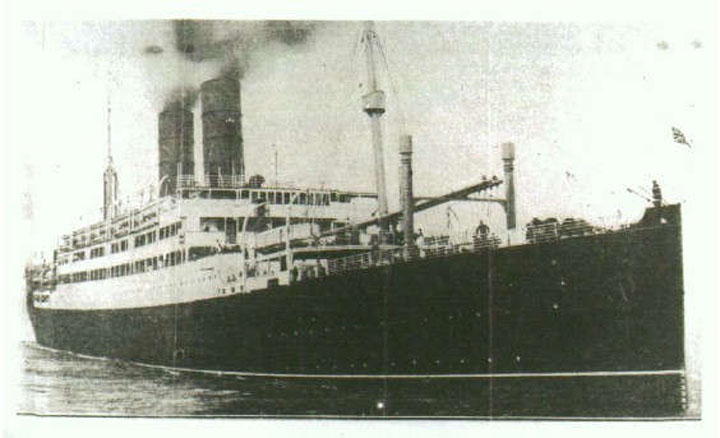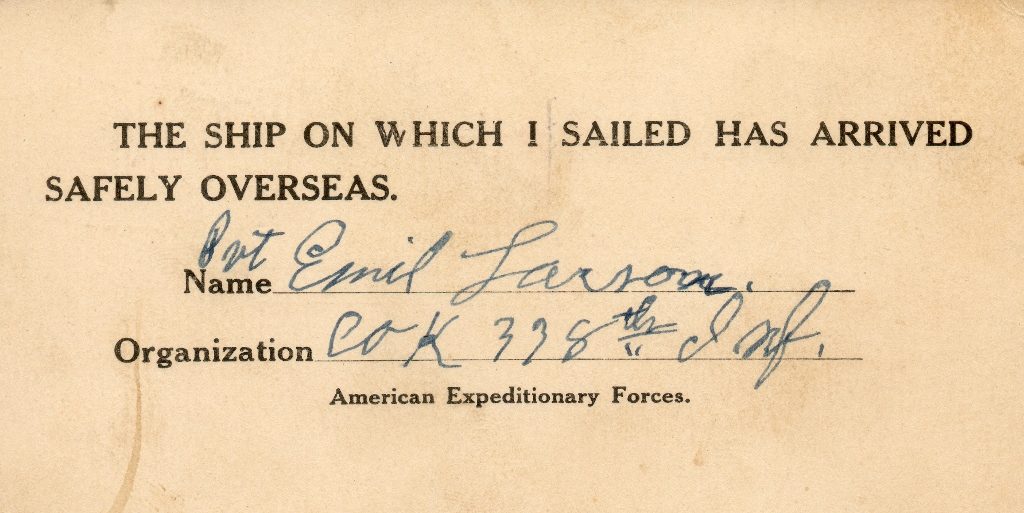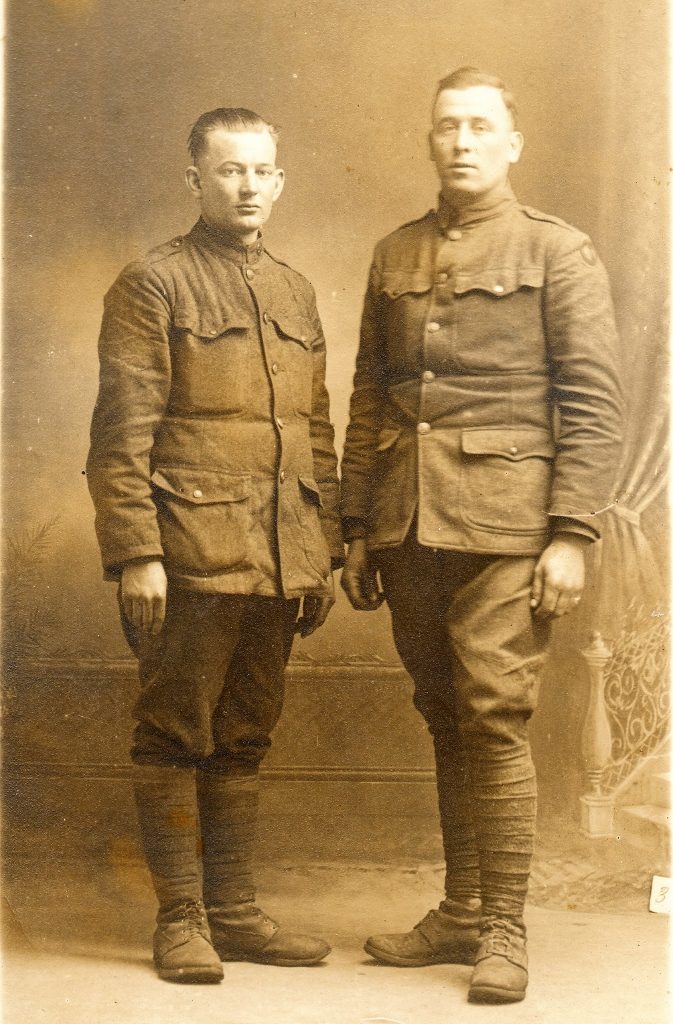On February 5, 1918, the sinking of the troop transport ship SS Tuscania sent shock waves across the nation, including the town of Manistique. The Tuscania was a former luxury passenger liner that had been pressed into service as a troop carrier by the United States Army. The Tuscania had sailed from Hoboken, New Jersey on January 24, 1918 with 2,013 soldiers and 383 crewmen on board. Despite being escorted by a British convey, the Tuscania was struck by a torpedo fired from a German submarine, and sent to the bottom of the Irish Sea. The vast majority of the troops aboard the Tuscania were rescued by the Royal Navy Destroyers Mosquito and Pigeon, but 210 souls were lost, including both military personnel and crewmen.

The SS Tuscania from the Anchor Line was sunk by a German submarine on February 5, 1918 off the coast of Ireland.
The news was soon felt in Manistique, when it was learned that Theodore Montgomery was listed among the missing on the Tuscania. Montgomery was born in Manistique on December 5, 1887 and grew up in this city. He attended local schools and graduated from Manistique High School. Later, he found employment in Milwaukee, where he worked as a bookkeeper and stenographer. Theodore Montgomery enlisted in the Army while living in Milwaukee and was a member of Sanitary Squad No. 2 attached to the Medical Corp. On February 14th, though he continued to be listed as missing, his mother, Mrs. George Moody, received a cablegram announcing, to her great relief, that her son had been saved. A brother, Will F. Montgomery, also resided in Manistique and worked at the Charcoal Iron Company.
The good news concerning Theodore Montgomery did not lessen the anxiety of other families whose sons and daughters were headed overseas. Worry continued regarding the fate of the troop transport that carried over 30 young men from Manistique, who had enlisted in the 33rd Michigan Infantry in April of 1917. While the unit was in training at Camp MacArthur in Waco, Texas, it was federalized and its designation changed to Company M of the 125th U.S. Infantry. After four months of intense military training, the unit was transferred to Camp Merritt, New Jersey, where they underwent even further training before being sent overseas. They were placed on a transport ship in the port at Hoboken, New Jersey and set sail on February 10, 1918, just five days after the sinking of the Tuscania. The destination of the troop ship carrying the Manistique men was not disclosed.
The apprehension regarding the fate of this troop transport ship grew daily as nervous relatives waited for some word of its safe arrival in Europe. One week stretched into two weeks and still no news. Finally, late Tuesday evening, February 26, 1918, a cablegram from Hoboken, New Jersey was received in Sault Ste. Marie announcing the safe landing of the troop ship in Europe. From the Sault, a telegram was sent to Thomas Fydell in Manistique, who immediately went about notifying anxious parents and relatives. The following day, at 3:00 PM, the whistles at all the manufacturing plants in the city blew for five minutes to publicly announce the safe arrival of the troops overseas.
Eventually groups like the Red Cross and the Y.M.C.A. took over the task of notifying loved ones that their soldier had arrived safely in Europe. Such was the case of Pvt. Emil Larson. Larson was born in Thompson, Michigan on March 16, 1893 and resided at 514 Michigan Avenue in Manistique. He worked as a carpenter for Fredolph Danielson prior to his enlistment in the army. He served with the American Expeditionary Force in France as a member of Company K, 338th Infantry.

German submarines were an ever present danger to troop ships crossing the Atlantic. The YMCA assisted soldiers in notifying family members that they had arrived safely in Europe.

Emil Larson (left) and Paul Danielson (right)
